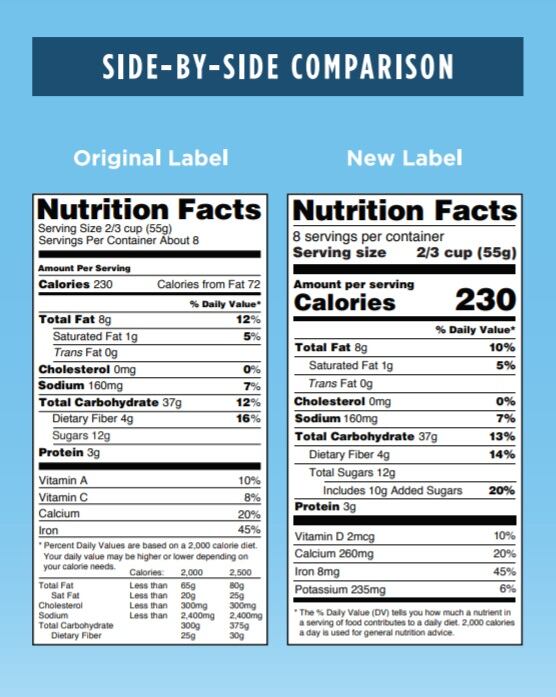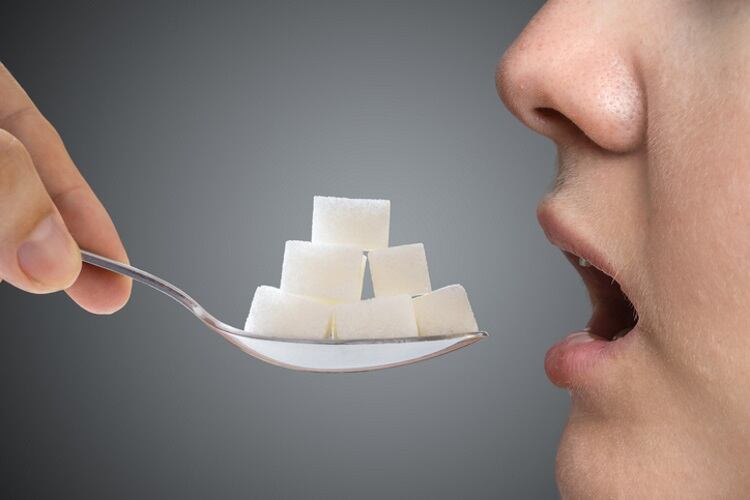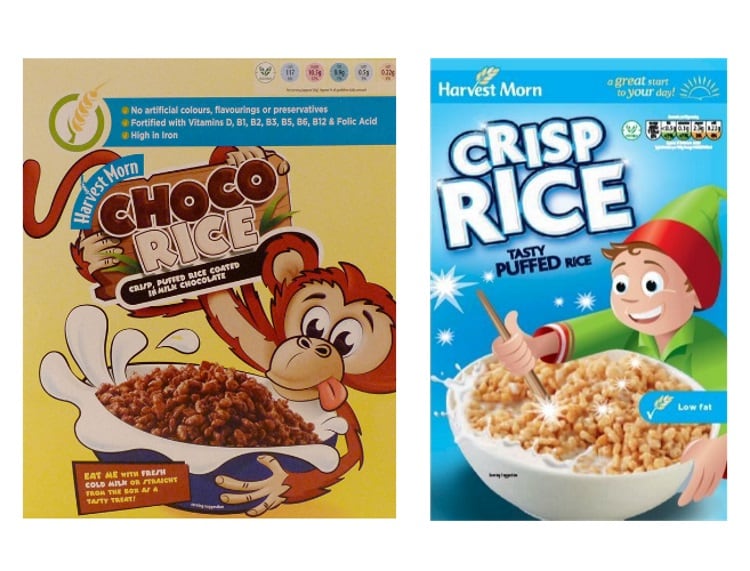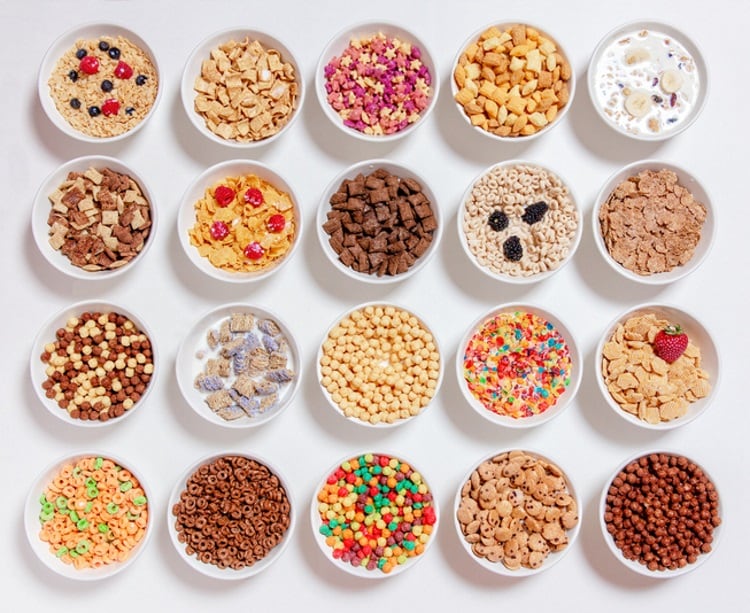In 2018, the UK joined a small number of countries to introduce a tax on sugary drinks as part of an anti-obesity policy.
While there is no such policy in place in the US, the FDA is playing its own role to decrease obesity among Americans by making the first major changes to the Nutrition Facts label since it was introduced 20 years ago.
According to the FDA, the adjustments are based on updated science, newer nutrition and public health research, and input from expert groups and the public to better reflect what Americans actually eat and drink today.
What is changing?

Added sugars
Sugars occur naturally in many foods (such as milk and fruit), but are also added for flavour, texture and functional purposes (such as corn syrup, brown sugar and honey).
The US Dietary Guidelines recommends that less than 10% of a person’s daily calories should come from ‘added sugars’, but trying to distinguish between the two could be confusing.
As such, for the first time, the FDA is highlighting ‘Added Sugars’ – and not just ‘Total Sugars’ – in an effort to get Americans to choose products that have lower amounts of added sugar.
Serving sizes
The FDA studied the amount that most Americans typically eat in one sitting and has rejigged the reference amount across a number of food categories – emphasising that the new serving sizes should not be viewed as a recommendation of how much a person should consume.
Some product packages also contain more than one serving – such as a sharing bag of chips, for example – so the label features dual columns: the calorie and nutrition info for one serving, and a second for the whole package size.
Calories
To really help Americans be more mindful of the amount of calories they are consuming, the FDA has placed ‘Calories’, ‘Servings Per Container’ and ‘Serving Size’ in larger, darker letters.
Fats
‘Calories From Fat’ is being removed, as research shows it’s the type of fat consumed – not the amount – that is more important. As such, percentages from the unhealthy saturated and trans fats are still listed.
Sodium allowance
The daily limit for sodium has decreased slightly – from 2,400mg to 2,300mg per day, matching the recommendation in the Dietary Guidelines for Americans, 2015-2020.
Required nutrients
Daily values for nutrients like vitamin D, potassium, calcium, and iron will feature on the label, based on newer scientific evidence.
Vitamin A and C are no longer required to be listed, as deficiencies of these – while rife in the early 1990s – is fairly rare in the general population today. However, they can be included voluntarily, as can other vitamins and minerals.
The pros and cons
Research has shown that how much people eat and drink today has changed considerably since the Nutrition Facts label was first published.
Twenty years ago, people ate a lot less than they do today, so the FDA has adjusted the serving sizes of some foods, to give people a more realistic view of the number of calories they are consuming.
For example, the reference amount for a serving of ice cream was previously ½ cup, but has now been upped to 2/3 cup.
The serving size of breakfast cereals, too, has increased, but this could actually have a downside.
Mike Siemienas, spokesperson for General Mills, told BakeryandSnacks the increase will obviously have a knock-on effect on the sugar content and calories, which could be a red flag for consumer watchdogs.
“As a result of the serving size increase, many numbers on the label, including sugar, have increased despite no changes to the recipes,” he emphasised.
In fact, a spokesperson for Cereal Partners Worldwide – a joint venture between General Mills and Nestlé – told this site the company is committed to play its part in helping to tackle obesity.
“In addition to cutting sugar and salt, we have increased wholegrain content across our portfolio. Nestlé cereals with a green banner have wholegrain as the number one ingredient and contain at least 8g of wholegrain per serving with the majority high in fibre,” she said.
Sting in the tale?
In the UK, ‘added sugars’ are getting their own bitter treatment in the form of a sugar tax.
According to a spokesperson for the Department of Health and Social Care, the implementation of the Soft Drinks Industry Levy (SDIL) has been a success – decreasing the average sugar content of drinks subject to the tax by 28.8% between 2015 and 2018.
“The Soft Drinks Industry levy is designed to tackle childhood obesity by incentivising producers and importers to reduce the amount of added-sugar in the drinks they sell,” she told this site.
Before stepping down as the UK government’s chief medical officer, Dame Sally Davies released a 98-page manifesto designed to tackle the country’s obesity problem, calling for the sugar tax to be extended to products like breakfast cereals, cakes and yoghurts.
Holly Gabriel, nutritionist for the UK’s Action on Sugar agrees with the call, noting the voluntary sugar reduction programme, in contrast, has only resulted in a 2.9% reduction in sugar.
“We would also like to see the introduction of a calorie levy on all energy dense processed foods that meet an agreed criteria set by government.”
But it’s not all cut and dried, and would have an enormous impact if implemented.
In the meantime, the Department of Health and Social Care continues ‘to monitor the impact of the Soft Drinks Industry levy on public health’ and Public Health England is hoping to achieve its 20% sugar reduction by the end of this year.
The new Nutrition Facts label is already appearing on many products in the US, as it was mandatory for manufacturers with $10m or more in annual sales to update their packages by the beginning of 2020.
Manufacturers with less than $10m in annual food sales have an extra year to comply – until January 1, 2021.




